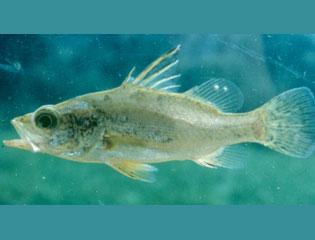Lates niloticus (ITIS)
Nile Perch
Africa (NAS Database)
August 1975 (Rutledge and Lyons 1976)
Intentionally introduced to Texas for sport fishing (Rutledge and Lyons 1976)
Was introduced to Lake Victoria (Africa) in 1954, where it destroyed 200 native species of fish through predation and competition for food (Kaufman 1992); no negative impact in Texas so far as the species is still controlled (NAS Database)
Not currently established

Nile perch
Pam Schofield - DOI, U.S. Geological Survey
Find more images
Federally Regulated
All Resources
Selected Resources
The section below contains highly relevant resources for this species, organized by source.
Partnership
Integrated Taxonomic Information System. Lates niloticus. [Accessed Sep 21, 2023].
Kaufman, L. 1992. Catastrophic change in species-rich freshwater ecosystems: the lessons of Lake Victoria. Bioscience 42:846-858.
Nonindigenous Aquatic Species Database. Fact Sheet - Nile Perch. USGS, Gainesville, FL. [Accessed Sep 21, 2023].
Rutledge, W.P. and B.W. Lyons. 1976. Texas peacock bass and Nile perch: status report. In: Proceedings of the Thirtieth Annual Conference Southeastern Association of Fish and Wildlife Agencies (pp.18-23). Jackson, Miss.: Southeastern Association of Fish and Wildlife Agencies.
